Monday and Thursday are studio days. On these days in particular, the third floor undergraduate studio is filled with a frenetic energy of design, research, and exploration. Students can usually be found talking excitedly with design professors and classmates in a habitat saturated with trace sketches, study models, and empty coffee cups. This week we are sharing a series of 4B Comprehensive Building Design projects to honour the Class of 2014 and their recent convocation! Congratulations everyone.
Interested in having your work featured on our STUDENT WORK Monday series? Check out our BRIDGE Contact page for submission details.
4B DESIGN STUDIO SPRING 2014: THE VOSS SPA – P3
Coordinator: Andrew Levitt
This past summer, the Comprehensive Building Design Studio focused on a site in Vossevangen, Norway. Students were asked to design a spa for use by both local people and visiting tourists. The programme included saunas, treatment rooms, a movement studio, communal kitchen, accommodation rooms, and camping areas.
In the P3 assignment, students built on the research completed during the Technical Report stage to present fully developed projects. At the same time, they completed the last studio deadline ever of their undergraduate careers. Wow. Nostalgia begins to set in…
But the class produced some pretty amazing work. Take a look below.
Renderings, drawings, and project summaries follow, submitted by students from their P3 presentation material.
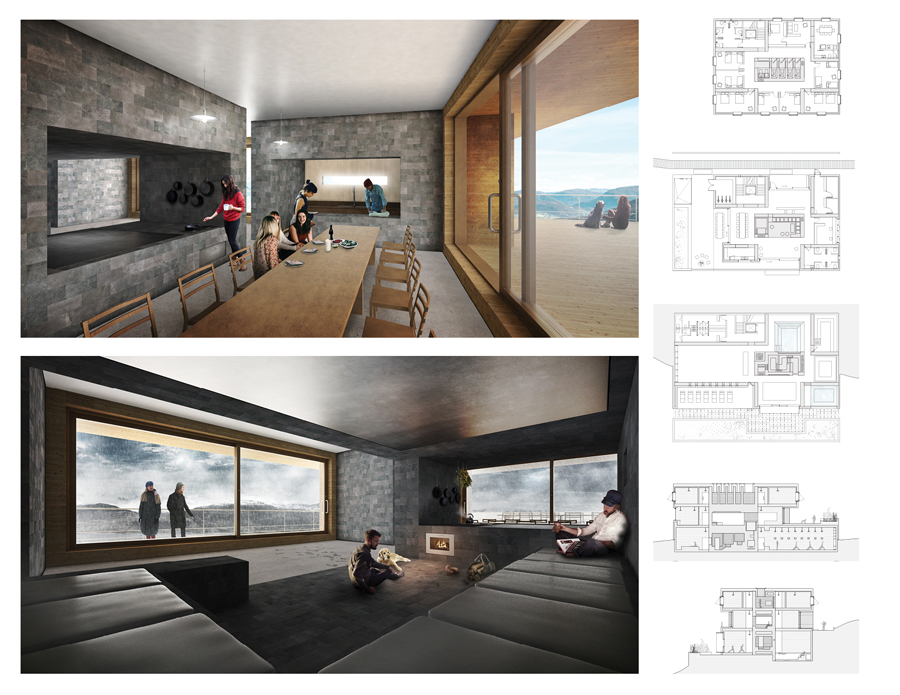 Alex Bodkin
Alex Bodkin
The Voss Spa + Hostel is primarily concerned with heat generation, transfer, and retention, and how these enhance the traveler’s phenomenological experience. A Central Hot Core contains the most intense heat-generating programs on each floor within a single, inhabitable volume that extends vertically through all three floors. A Finnish Contraflow Masonry Heater is located in the Central Hot Core on the Spa Level. Fired two to four times daily, it generates heat for the entire building using sustainably sourced firewood that is dried on site. The Central Hot Core transfers this heat directly to the open plan spaces around it through radiation and convection, but also through hot water, steam, and hot stones. Structural walls absorb some of this heat and re-radiate it out at a constant rate. They also contain radiant heating pipes for more precise temperature control. The envelope is an insulating skin that acts like a vacuum pack, an exterior layer pulled tight over the internal structure.
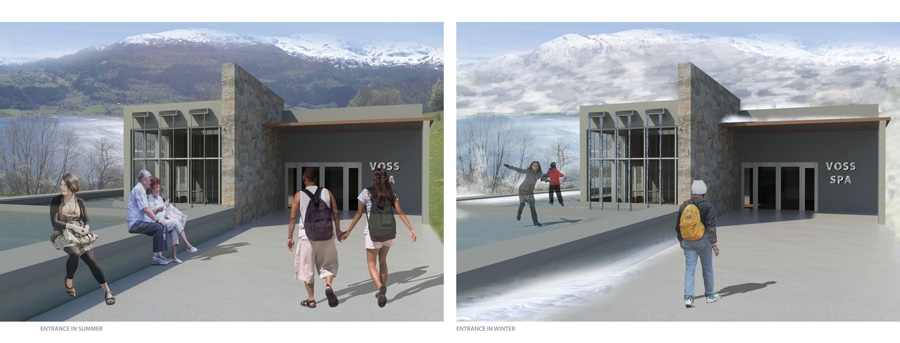
Katelynn Black
Cascade & Cleanse/Water Treatment Spa: The design of this spa is inspired by the flow of water, from the exterior, where the design focuses on the treatment of water for use throughout the building, to the interior, where the space revolves around the treatment of visitors by water. The exterior rooftop spaces treat the rainwater for use within the building. Within the spa, water works to treat the people experiencing the space through sounds, evaporative cooling and thermal baths. The emulation of water also forms the major circulation system of the building, where visitors flow through the space like water flowing through a river.
The importance of the hearth in Norwegian culture hearkens back to the primal need for warmth and light in a cold, dark environment. The act of collecting, drying, and burning wood is implemented in the Ilsted Spa. After checking in at reception, campers and residents are invited to collect wood from the drying racks. Taking the firewood back to their camping platforms and cabins, fires keep visitors warm and marks their occupation on the site. The Ilsted Spa makes use of the resources found on-site to constantly replenish its energy supply, negotiating a condition between light and dark, full and empty, and cold and warm.
Stephanie Fleming
The spa is both immersed in the land and immersed in the landscape. The bar of the building that is built into the slope contains programs that require separate conditions from the exterior. The bar of the building that projects out into the landscape contains programs that can be opened to the exterior. The two bars come together at the atrium, from which the sequences through the building branch out. These sequences are characterized by movement from the atrium along one of the building’s bars and out of the building, culminating in this immersion in the landscape.
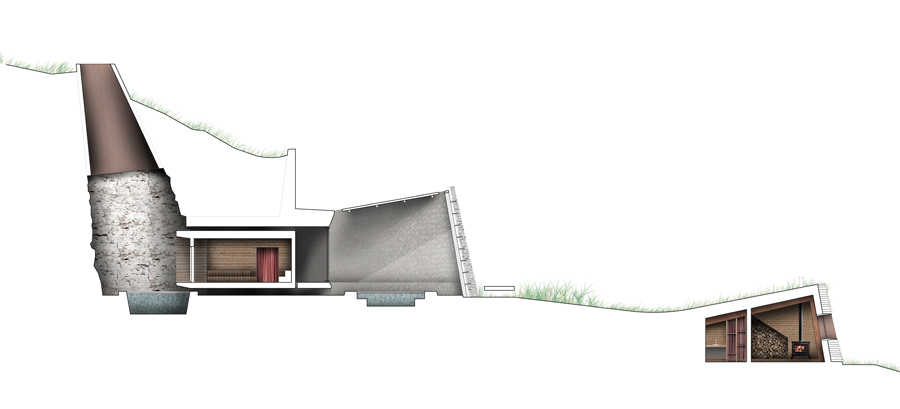 Samuel Ganton
Samuel Ganton
Håndverk: To settle on Norway’s rugged hillsides, people sculpted the building blocks of their landscape – earth, wood, and stone – directly into architecture. Håndverk aims to recover this ethos of construction using found material. As the spa brings us back to the physical, to the consciousness of body, this building brings us back to the physical in the landscape. Sod, twigs, and fragments of bedrock are extracted from the site and reassembled as cladding materials for the spa. The materials retain their rough qualities, but are framed by precise detailing. This is a contemporary work of craft. Continuing this direct confrontation with site, programme areas are grouped to correspond to different landscape conditions. Some are buried, some are exposed. Some are for social gathering, others for personal renewal. The spa encompasses a range of conditions, extrapolating from site to craft a place that enhances the experience of landscape and body.
I Bakken aims to create a spiritually renewing experience through the visceral tie between architecture, landscape, and the body. The materiality of the complex is natural, and elemental. The palette will stimulate the senses with textures, and colours reminiscent of the surrounding landscape. The cluster of buildings seeks to engage in the landscape conditions, using them as a method to organize interior and exterior programs and mediate privacy. The spa guest enters the complex at the top of the slope and the most public administration building. As they move downward, the program areas become more private, eventually leading to the hotel rooms.
In Norway there is a rooted sense of place in the landscape, a visceral connection to material and nature. This rootedness is balanced with a perpetual curiosity and a continuous quest for innovation. This stride towards new ideas is different from the typical avant-garde approach where context and history are dismissed. It is a symbiotic relationship where the yearning for new ideas occurs through the lens of culture, history, and a profound connection to nature. This project explores a dialectic of the familiar and the unique; the traditional and the radical.
Pilgrimage is the undertaking of a spiritual journey. It is an occasion of gathering and finding harmony with community members and an opportunity for feasting, music and dancing. Through the design, Pilgrimage becomes a state of mind, a state of consciousness and a state of fearlessness. As the act of walking is essential to a pilgrimage, movement is an important aspect of the design. It connects us with the earth and the perspiration is good, washing ourselves from the inside. It becomes a step of completion towards self-realization. The design contains the totality of Nordic conditions that are communicated to the users through a sensory journey, connections to the earth and sky, and establishing an ecology between community members, plants, animals and birds. The Architecture of the spa frames moments of totality and individuality where spirituality and physicality come together.
Roksena Nikolova
Elvestrommen Bath – it means “River Flow.”
The roof as an architectural element is often overlooked. However, with indigenous Norwegian architecture the roof is often the most expressive element of a building’s tectonics. The pitch, materiality and construction of the roofs are carefully considered, often with the roof and wall merging into one element. This project explores the spatial qualities of an A-frame section, jogging in plan to work with the topography and provide both dramatic spaces that open up to the landscape and more intimate spaces carved out for the spa program.
Samuel Ganton is a graduate student at the University of Waterloo School of Architecture. His thesis research focuses on designing a thunderstorm observatory on a lake in Venezuela.


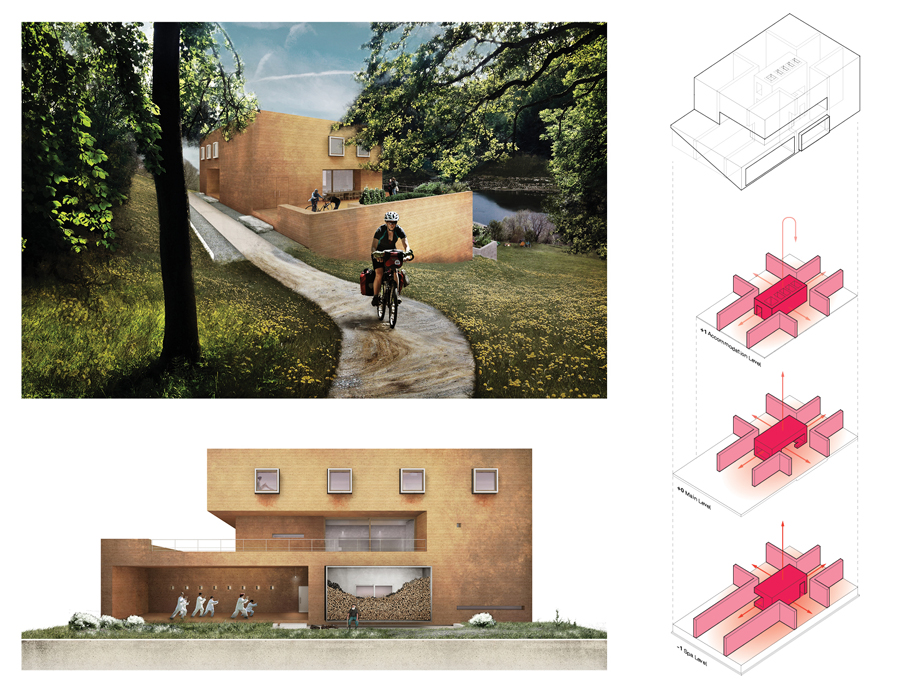
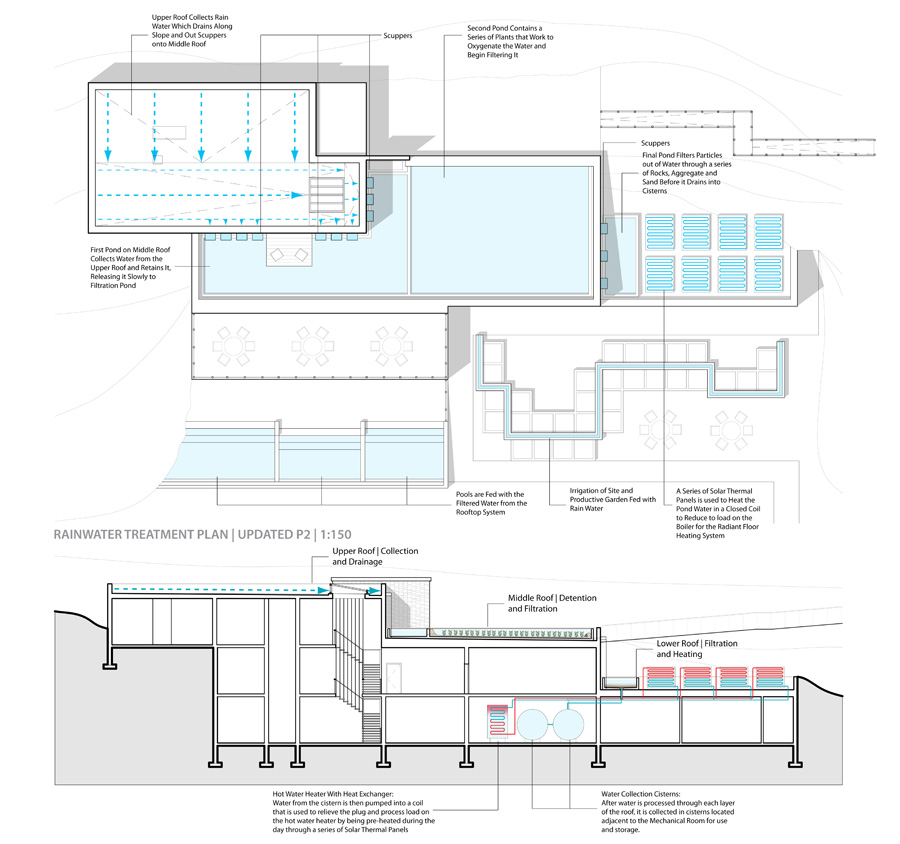
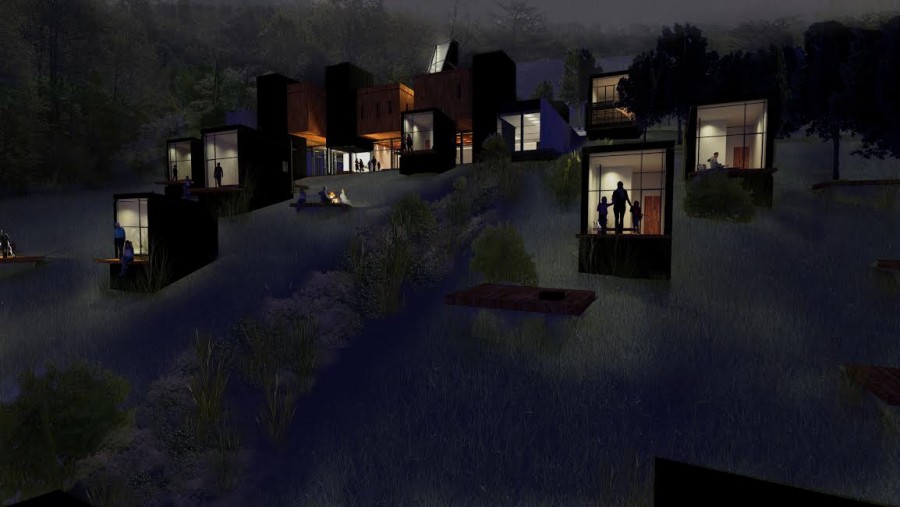
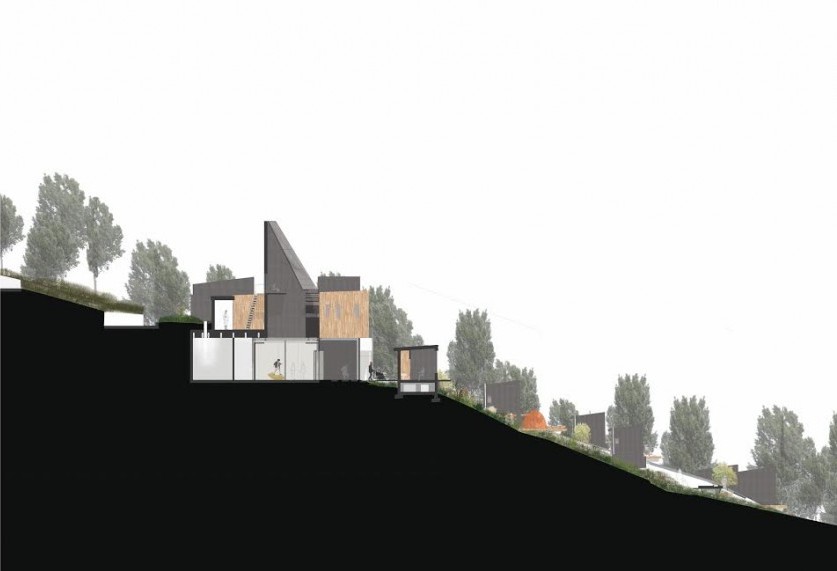
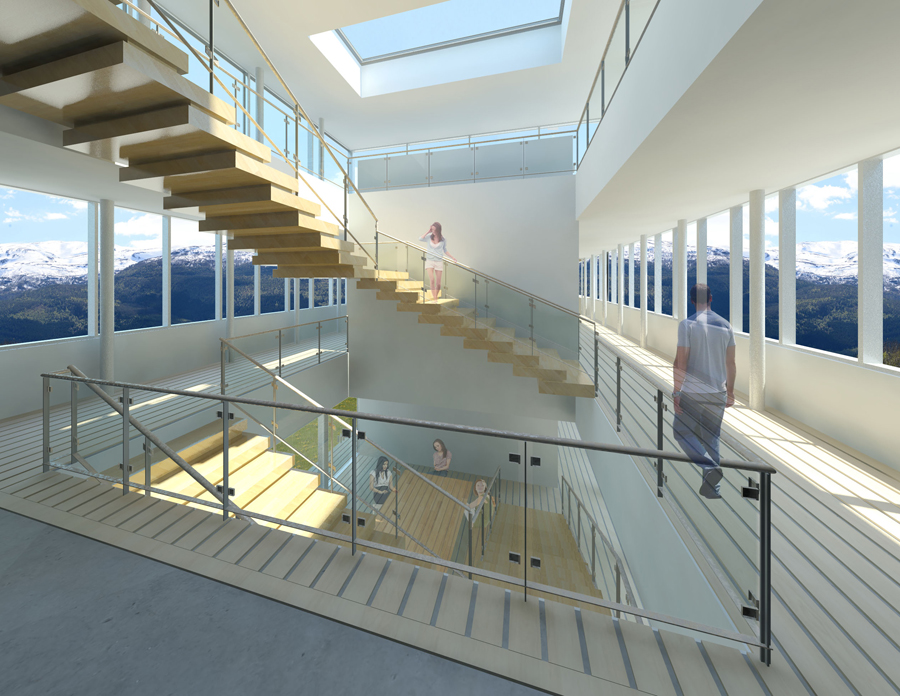
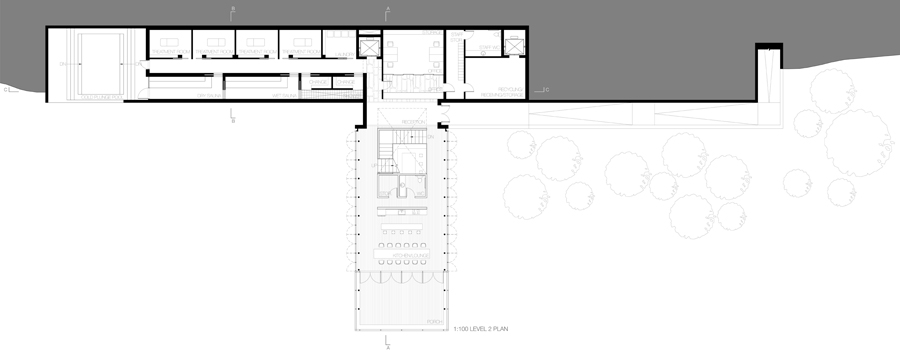
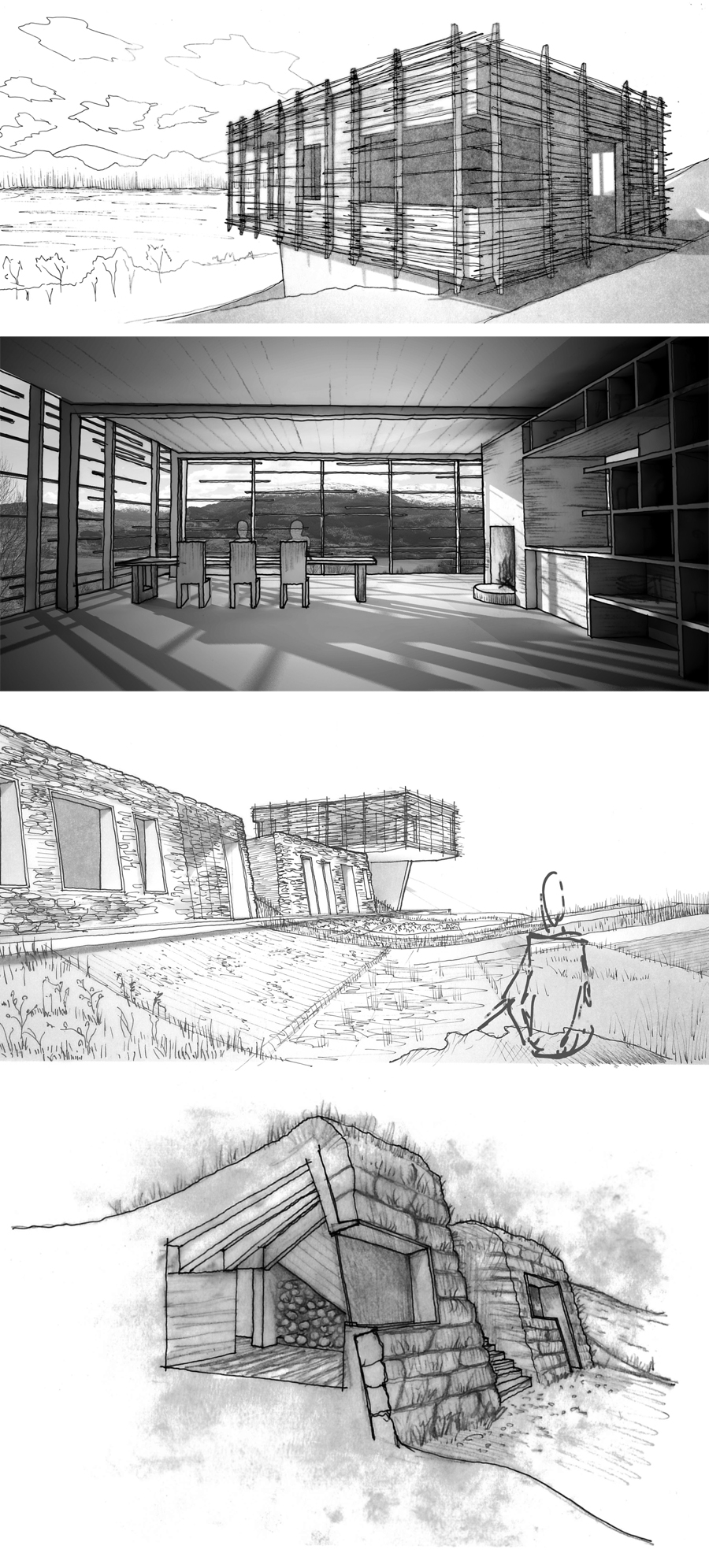
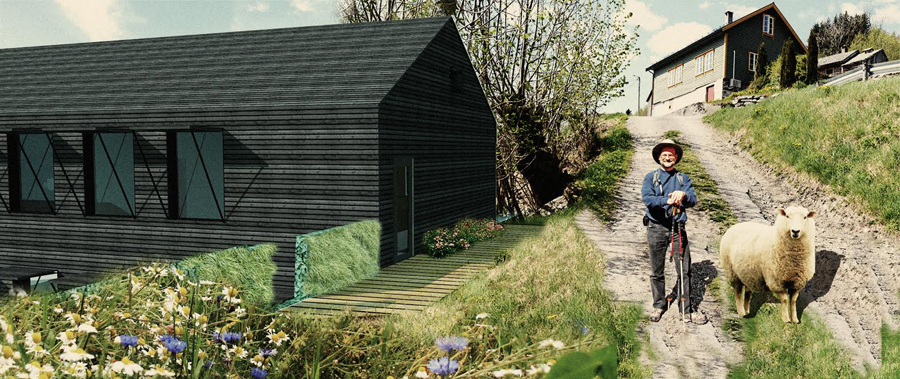
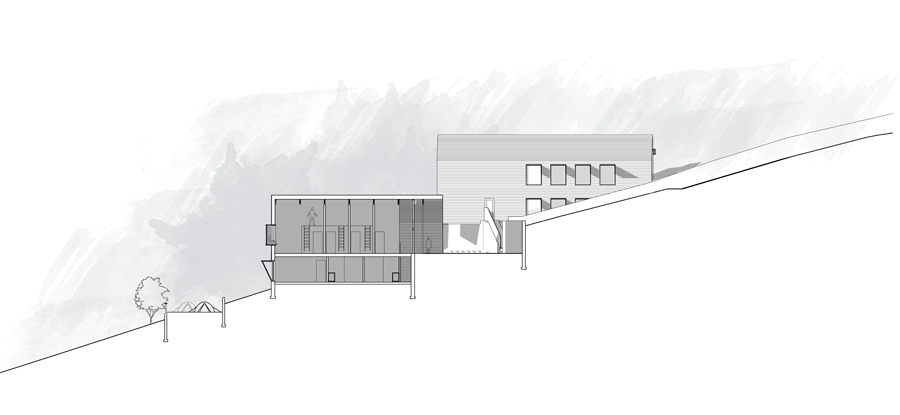
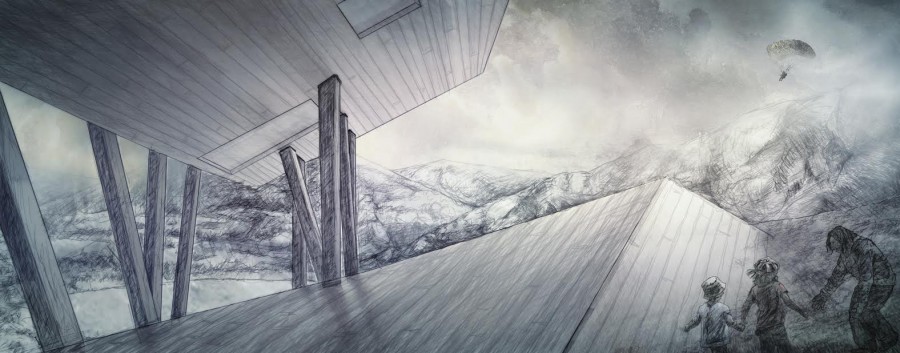

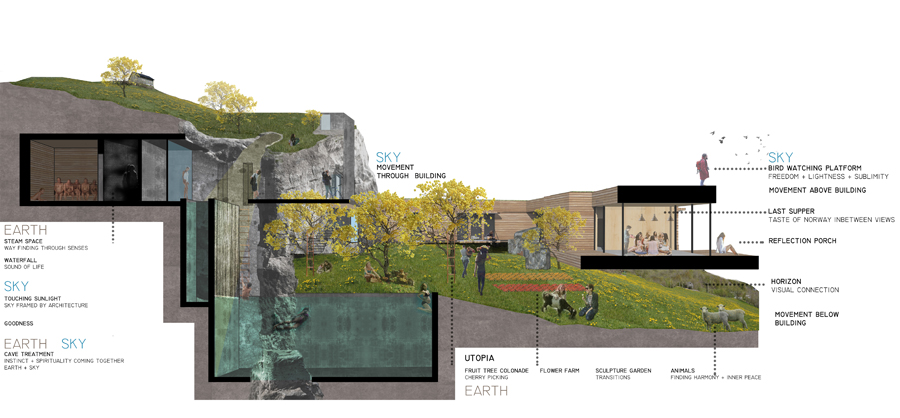
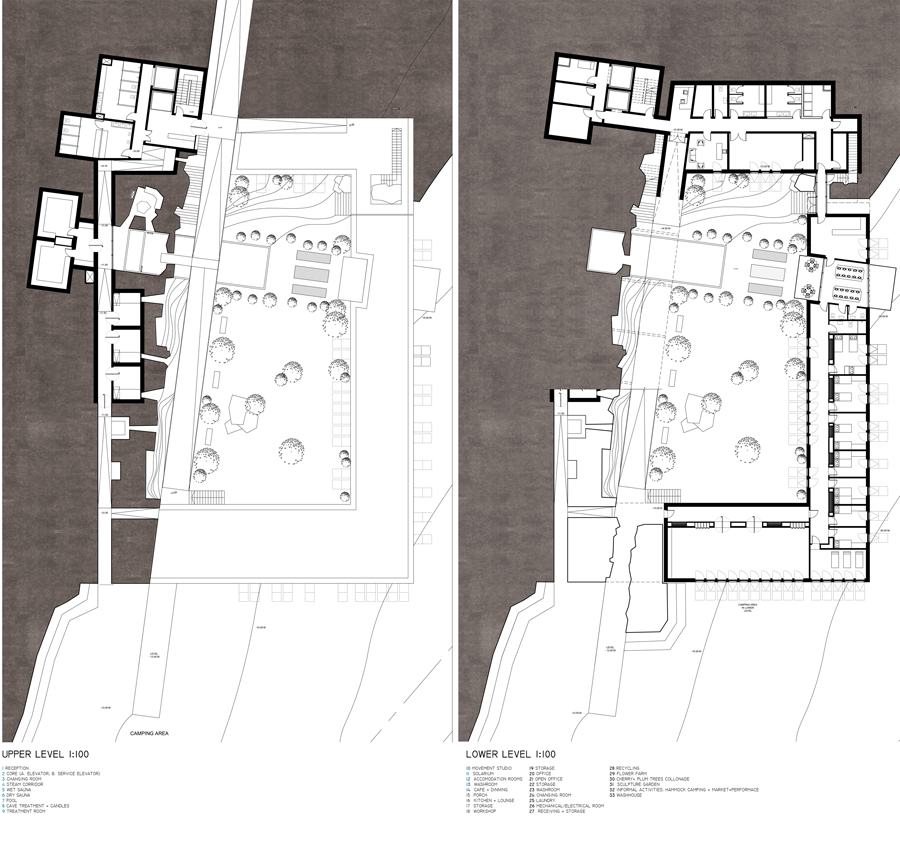
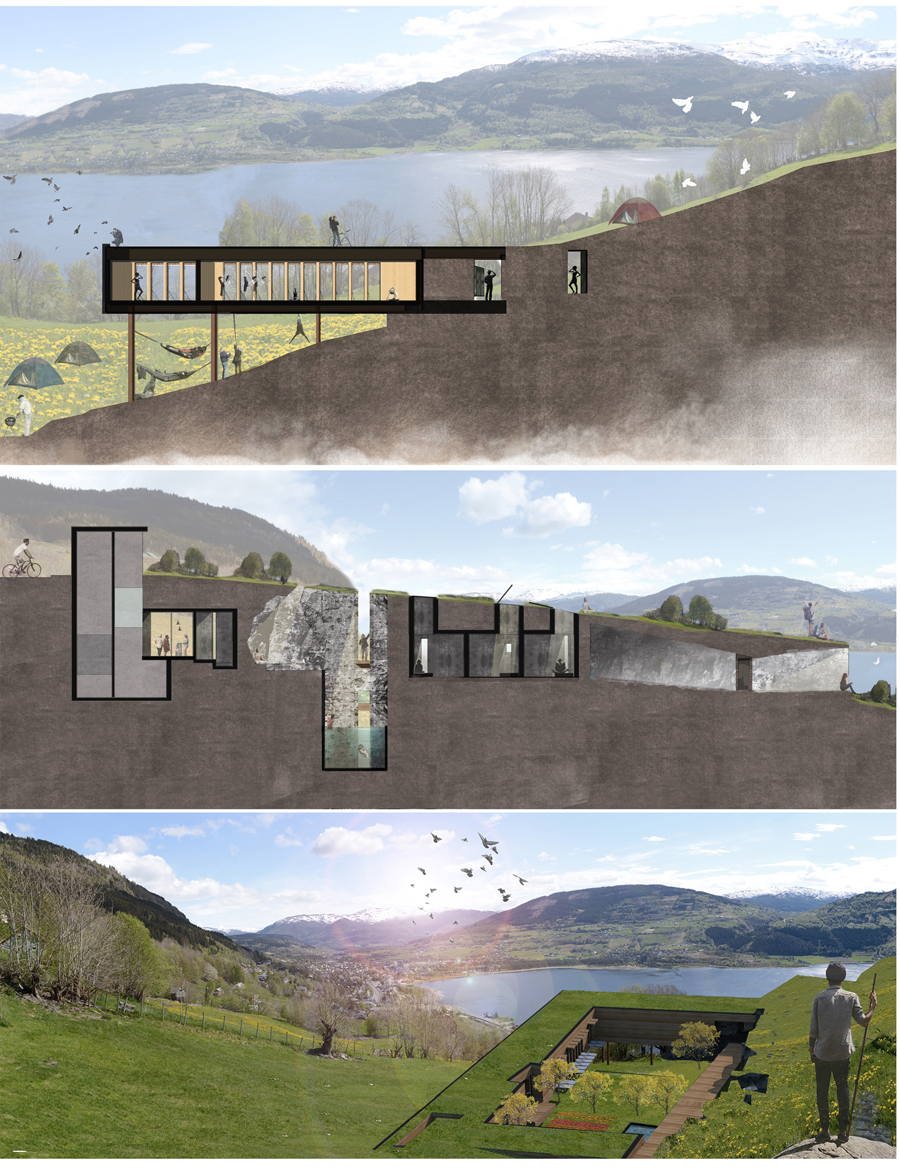
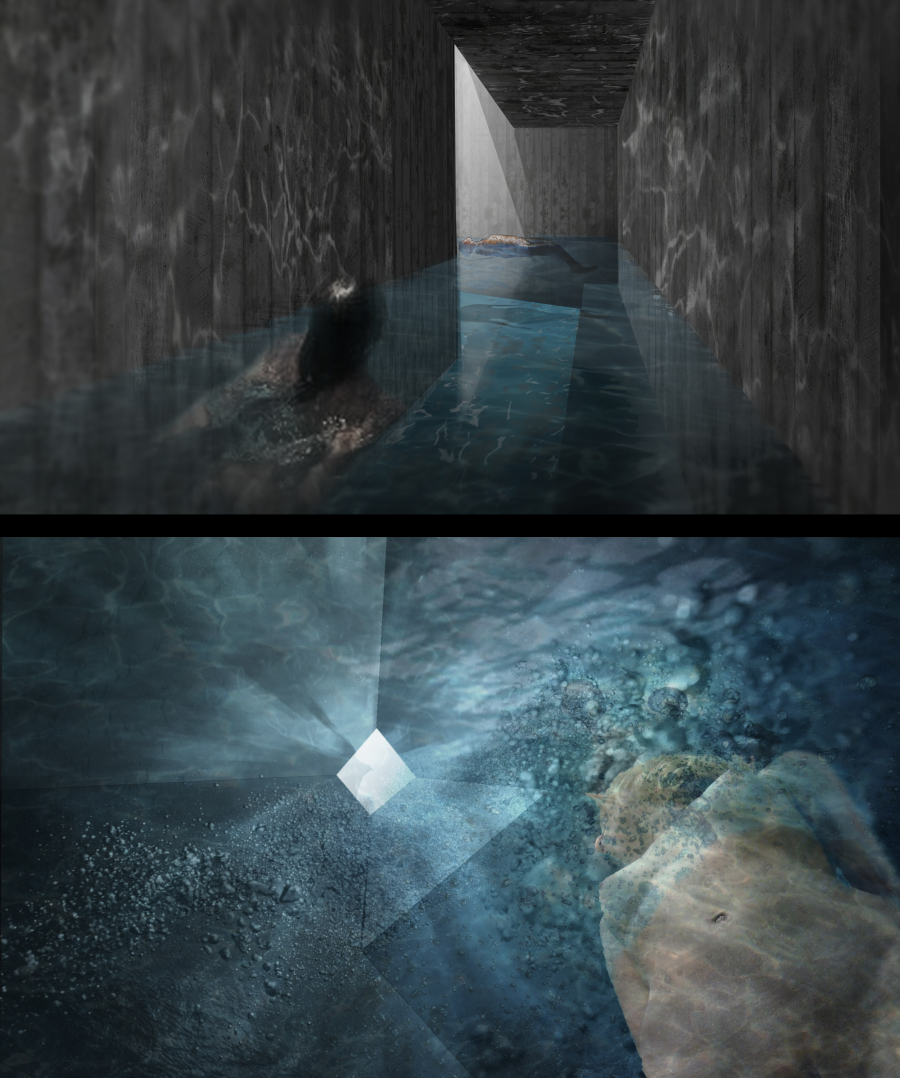


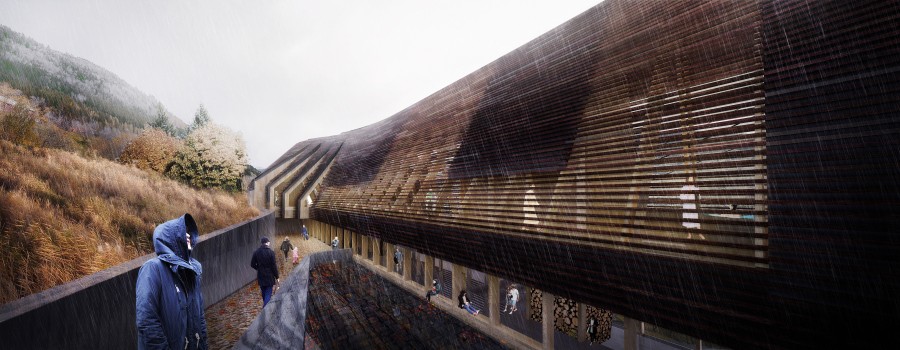
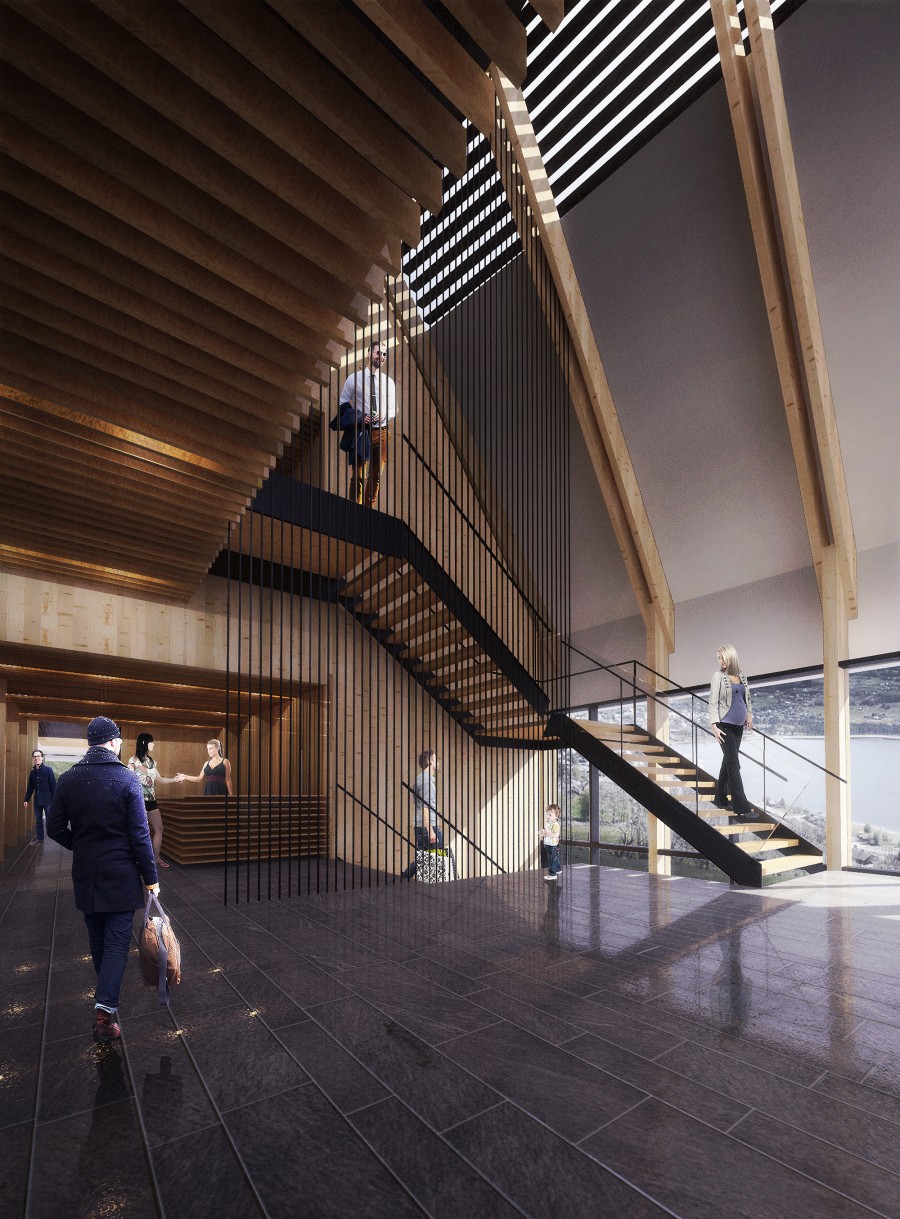 Haley Zhou
Haley Zhou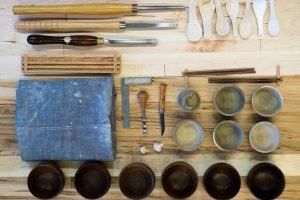
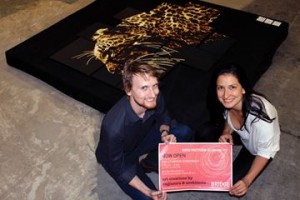
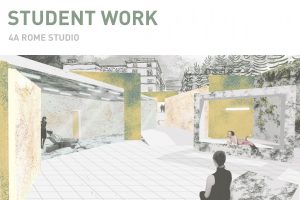
Leave a Reply